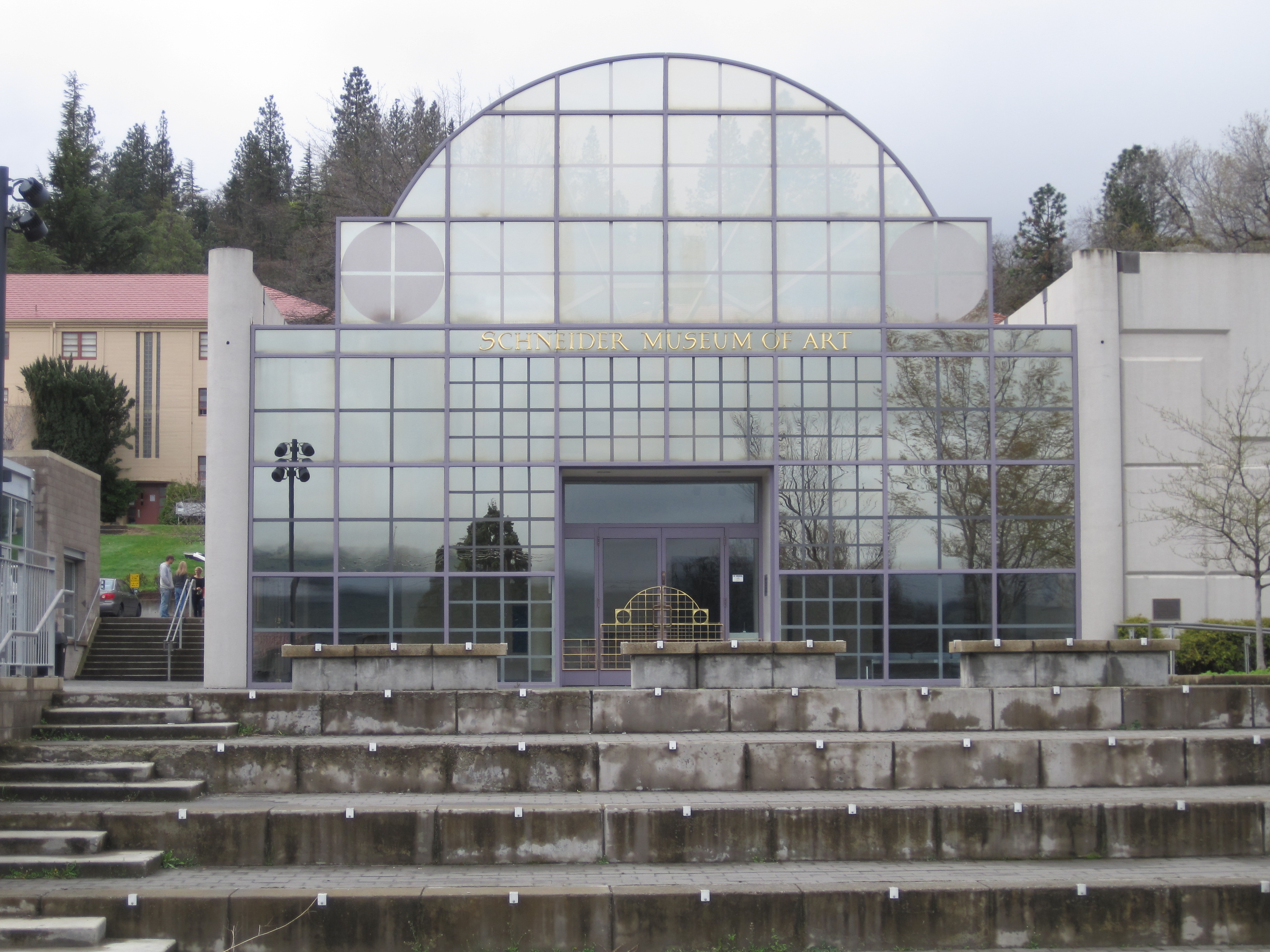The Oregon Museums Association (OMA) held its annual meeting October 28-30, in Ashland. Our host institution, the Schneider Museum of Art on the campus of Southern Oregon University, provided a wonderful atmosphere for the proceedings. The meeting provided Oregon’s museum professionals with the opportunity to learn from one another, from sessions and through workshops, to share new ideas and current best practices, to network and to visit Ashland and Medford’s cultural and heritage sites.
We had more than 50 colleagues from Oregon, many from south western Oregon, but some coming from as far away as Hood River, an hour east of Portland along the Columbia River and Pendleton, in our state’s northeastern corner. Plus I am pretty sure I was chatting with Wanda Chin at some point! She and her husband have recently relocated to Ashland and plan to remain active in the museum community.
Kara West, Assistant Director of Operations/Field Management with the Balboa Art Conservation Center (BACC), sponsored a pre-conference workshop on Creating an Emergency Preparedness and Response Plan for Collections
There were lots of networking opportunities, from dinner at the Standing Stone Brewery Company to daily continental breakfasts; to a lunch-time gathering to a wonderful reception hosted by the Schneider Art Museum.
Sessions included “Creating the New Normal for Tourists and Communities,” “Building the Community Through Heritage Collaboration,” “Exhibit Evaluation,” “Social Media Strategy For Museums,” “Connecting Communities and Museum Collections,” “History: Made By You,” “Building Community Relevance with Low-Hanging Fruit,” “What do I do with this?! Conundrums in the Collection,” and “Creating Relevant Internships”
The sessions at OMA are challenging because the members and attendees range in size and type: from large institutions like Portland Art Museum (PAM) and the Oregon Museum of Science and Industry (OMSI), to small volunteer run organizations like Polk County Historical Society and the Silverton Country Museum, and every size and type in between. Given that, sessions need to strike a balance in providing information, examples and strategies that meet a variety of attendees’ needs. One session that met this need was “Exhibit Evaluation.” In this session, attendee were presented with an evaluation 101 presentation – what is exhibit evaluation and what are the basics of conducting assessments. Then the panel moved towards concrete examples: Focus groups and prototyping at the Museum of Natural and Cultural History, a model of practitioner-led evaluation that OMSI has been using called team-based inquiry, the work PAM is doing with using looxcie cameras to evaluate visitor experiences (here's a link about the work: http://blogs.oregonstate.edu/freechoicelab/2012/07/13/conversations-about-conversations-at-portland-art-museum/).
Another session that really struck a chord with a number of conference goers was “Connecting Communities and Museum Collections.” As Kuri Gill with the Oregon Heritage Commission put it, “While I have seen some of the ideas for sharing with visitors how museums are stewards for the public of important artifacts, it was nice to see ideas in play on a smaller scale than the Chicago Field Museum. The most interesting part was the idea of inviting community to review and provide information about collections and making it a part of museum practice, either within an accession/inventory process, or exhibit research and preparation process. There is a ton of potential there, plus if their information is included in an exhibit, they will bring friends and family to see it.”
Overall, evaluations of the conference were very positive, and comments like “[I now have a] better understanding of how to involve community with our rural museum;” “This was an excellent conference - so much learned and great networking;” and “After this session I will implement what I learned with a hostile takeover of the social media [at our museum] - it needs a complete overhaul with organized approach and official policies.”
Ann Craig, OMA board member and member of the annual meeting’s program committee, said that she was “…stunned to see how many board members and volunteers attended the conference. It speaks to the high number of museums (and collections!) in Oregon that are cared for simply because people cherish these objects and stories and not because it’s their job. While our goal as professionals was to increase the competence and connectivity among these museums, I was also reminded that it is our hearts that lead us to the work in the first place.”
Next fall, the OMA heads back north, towards Portland, for our annual meeting. And I have every reason to believe it will build on the success of Ashland. Hopefully I will see some of you there.
Keni Sturgeon is the Curator and Museum Director at the Willamette Heritage Center, as well as adjunct faculty at the University of Oklahoma and Linfield College teaching Museum Studies courses. She received her M.A. in Anthropology and Museum Studies from Arizona State University and in now in her 16th year in the museum profession. She is the Past Chair of AAM’s Committee on Audience Research and Evaluation, as well as a former board member of the Oregon Museums Association.









Add new comment